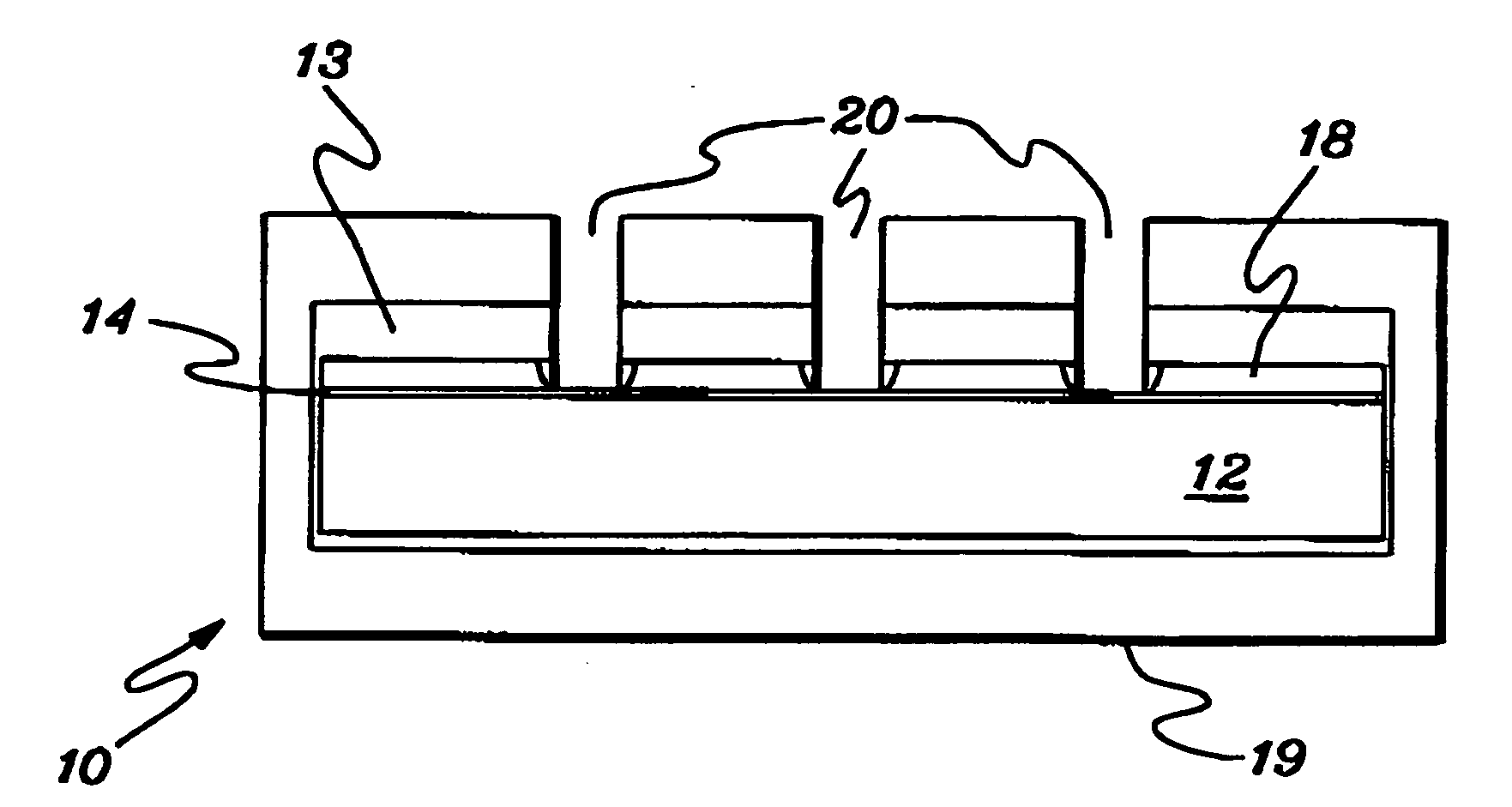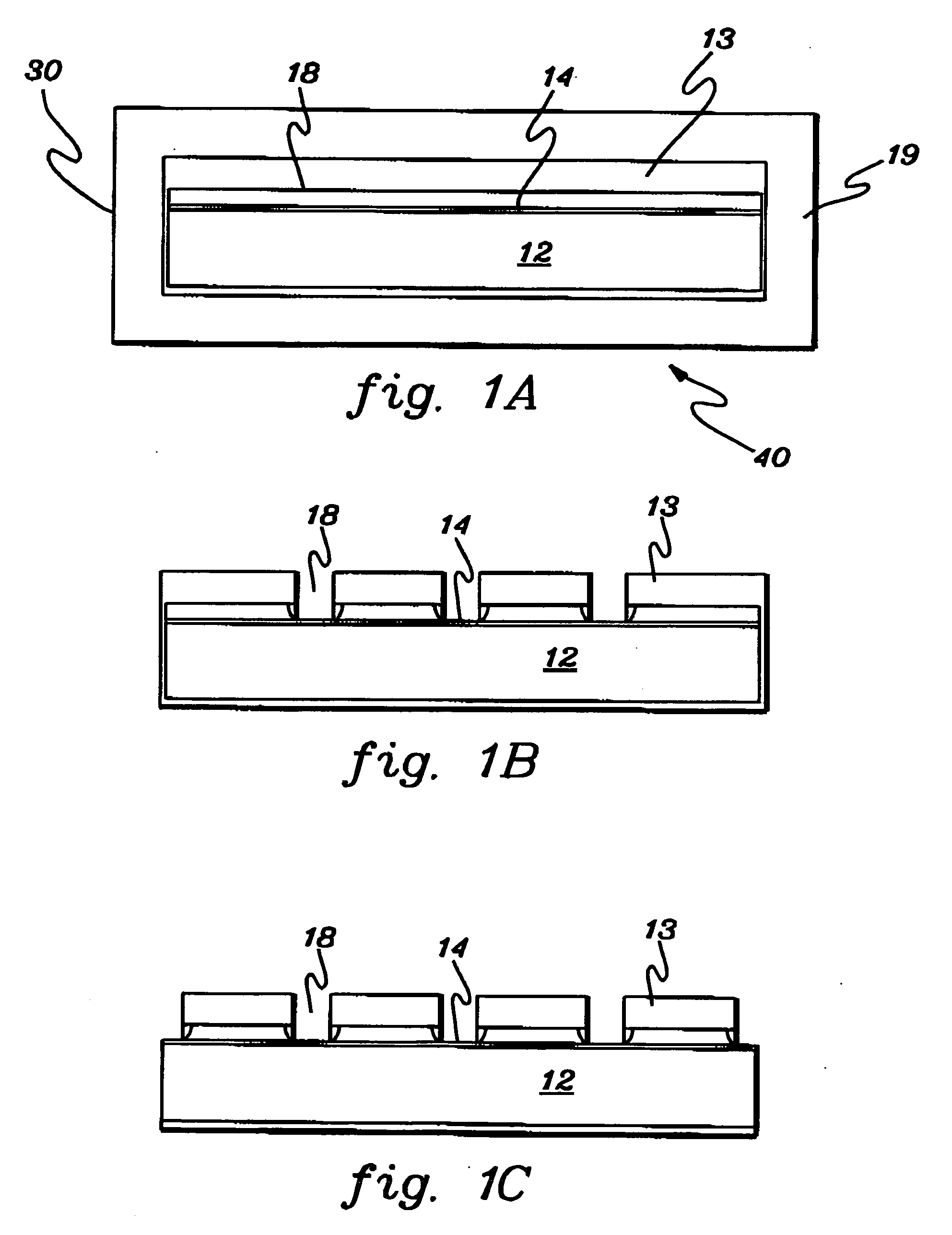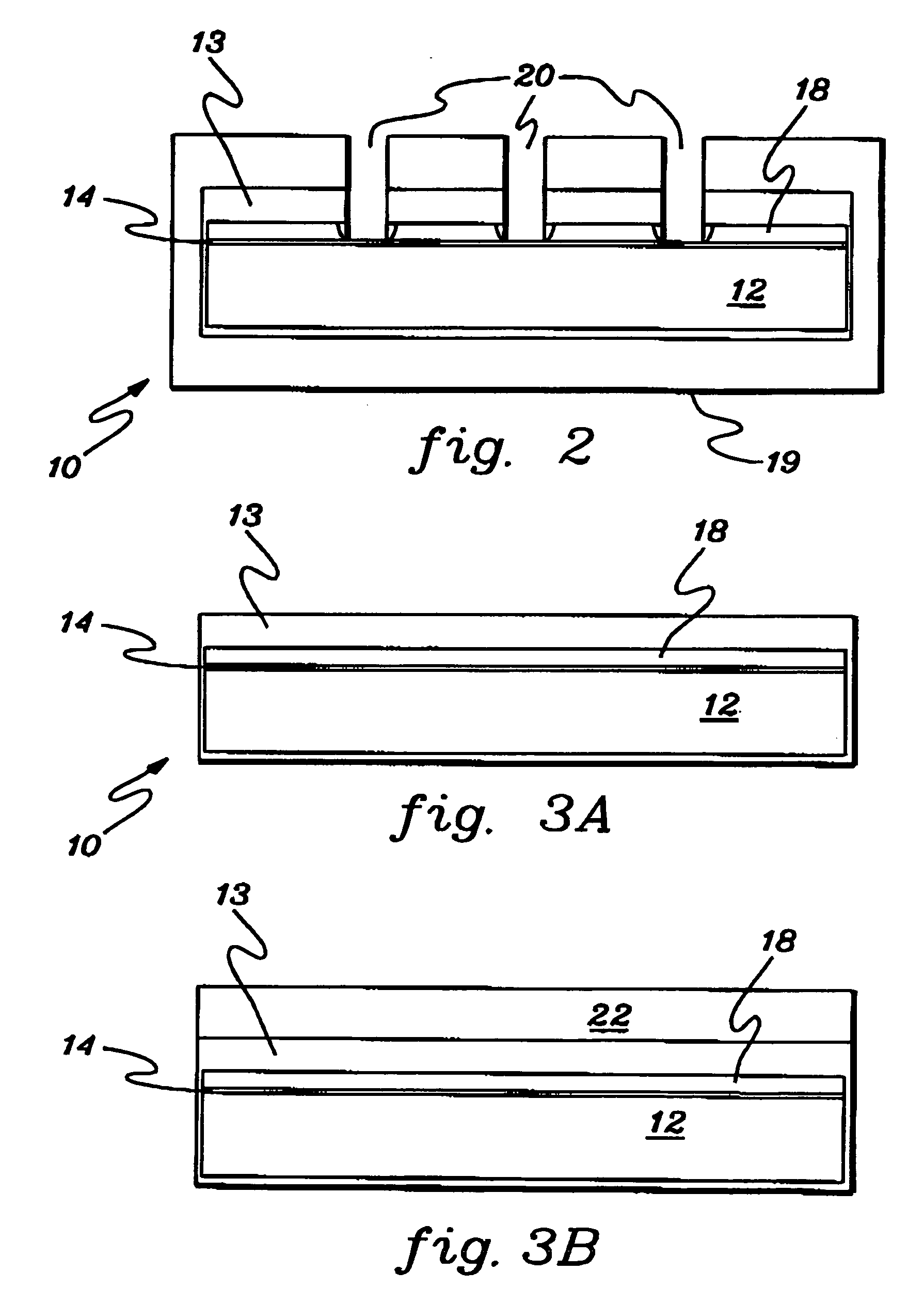Method of forming a multifilament ac tolerant conductor with striated stabilizer, articles related to the same, and devices incorporating the same
a technology of striated stabilizer and conductor, which is applied in the field of high temperature superconductors, can solve the problems of many challenges, high energy cost and end-use consumption in the united states, and the fabrication of commercially feasible hts tap
- Summary
- Abstract
- Description
- Claims
- Application Information
AI Technical Summary
Benefits of technology
Problems solved by technology
Method used
Image
Examples
example 1
[0066]Samples were created utilizing the novel striation technique described above. In particular, samples were provided using 4 mm width of substrate with a thickness of 50 microns. In these particular samples, the substrate used was a nickel-based alloy (Hastelloy C276). A buffer layer stack comprising of alumina, yttria, MgO, and LaMnO3 were deposited to a total thickness of 160 nm. Next, MOCVD (Metalorganic Chemical Vapor Deposition) process was performed to form a one micron thick YBCO layer. Next, samples were then subjected to magnetron sputtering of silver to form 3-micron thick capping layers. Next, a layer of dry film photoresist was coated, such that a known photolithographic technique, i.e. broad band UV exposure and photoresist developing, could be used to transfer the desired striation pattern. Those samples were placed in a copper-sulfate solution and biased such that the capping layers formed a cathode, the anode being a copper plate. Electroplating was carried out t...
example 2
[0067]Samples were created utilizing the novel striation technique described above. In particular, samples were provided using 4 mm width of substrate with a thickness of 50 microns. In these particular samples, the substrate used was a nickel-based alloy (Hastelloy C276). A buffer layer stack comprising of alumina, yttria, MgO, and LaMnO3 were deposited to a total thickness of 160 nm. Next, MOCVD (Metalorganic Chemical Vapor Deposition) process was performed to form a one-micron thick YBCO layer. Next, samples were then subjected to magnetron sputtering of silver to form 3-micron thick capping layers. Next, a polyimide film was laminated, such that a known laser ablation technique, i.e. using 308 nm or 248 nm excimer laser, could be used to transfer the desired striation pattern in a single step. Those samples were placed in a copper-sulfate solution and biased such that the capping layers formed a cathode, the anode being a copper plate. Electroplating was carried out to form a co...
example 3
[0068]Samples were created utilizing the novel striation technique described above. In particular, samples were provided using 4 mm width of substrate with a thickness of 50 microns. In these particular samples, the substrate used was a nickel-based alloy (Hastelloy C276). A buffer layer stack comprising of alumina, yttria, MgO, and LaMnO3 were deposited to a total thickness of 160 nm. Next, MOCVD (Metalorganic Chemical Vapor Deposition) process was performed to form a one-micron thick YBCO layer. Next, a 30-micron thick layer of dry film photoresist was coated, such that a known photolithographic technique, i.e. broad band UV exposure and photoresist developing, could be used to transfer the desired striation pattern. Then, samples were subjected to physical vapor deposition process to coat a 1-micron thick capping layer such as copper. In this deposition process such as metal evaporation, temperature is controlled to be compatible with photoresist remaining on samples. Next, those...
PUM
| Property | Measurement | Unit |
|---|---|---|
| thickness | aaaaa | aaaaa |
| critical temperature Tc | aaaaa | aaaaa |
| thickness | aaaaa | aaaaa |
Abstract
Description
Claims
Application Information
 Login to View More
Login to View More - R&D
- Intellectual Property
- Life Sciences
- Materials
- Tech Scout
- Unparalleled Data Quality
- Higher Quality Content
- 60% Fewer Hallucinations
Browse by: Latest US Patents, China's latest patents, Technical Efficacy Thesaurus, Application Domain, Technology Topic, Popular Technical Reports.
© 2025 PatSnap. All rights reserved.Legal|Privacy policy|Modern Slavery Act Transparency Statement|Sitemap|About US| Contact US: help@patsnap.com



